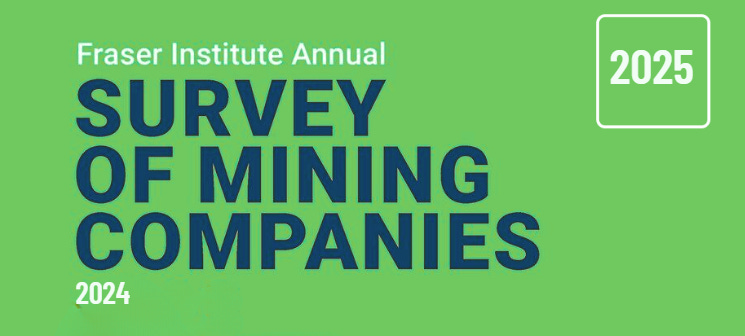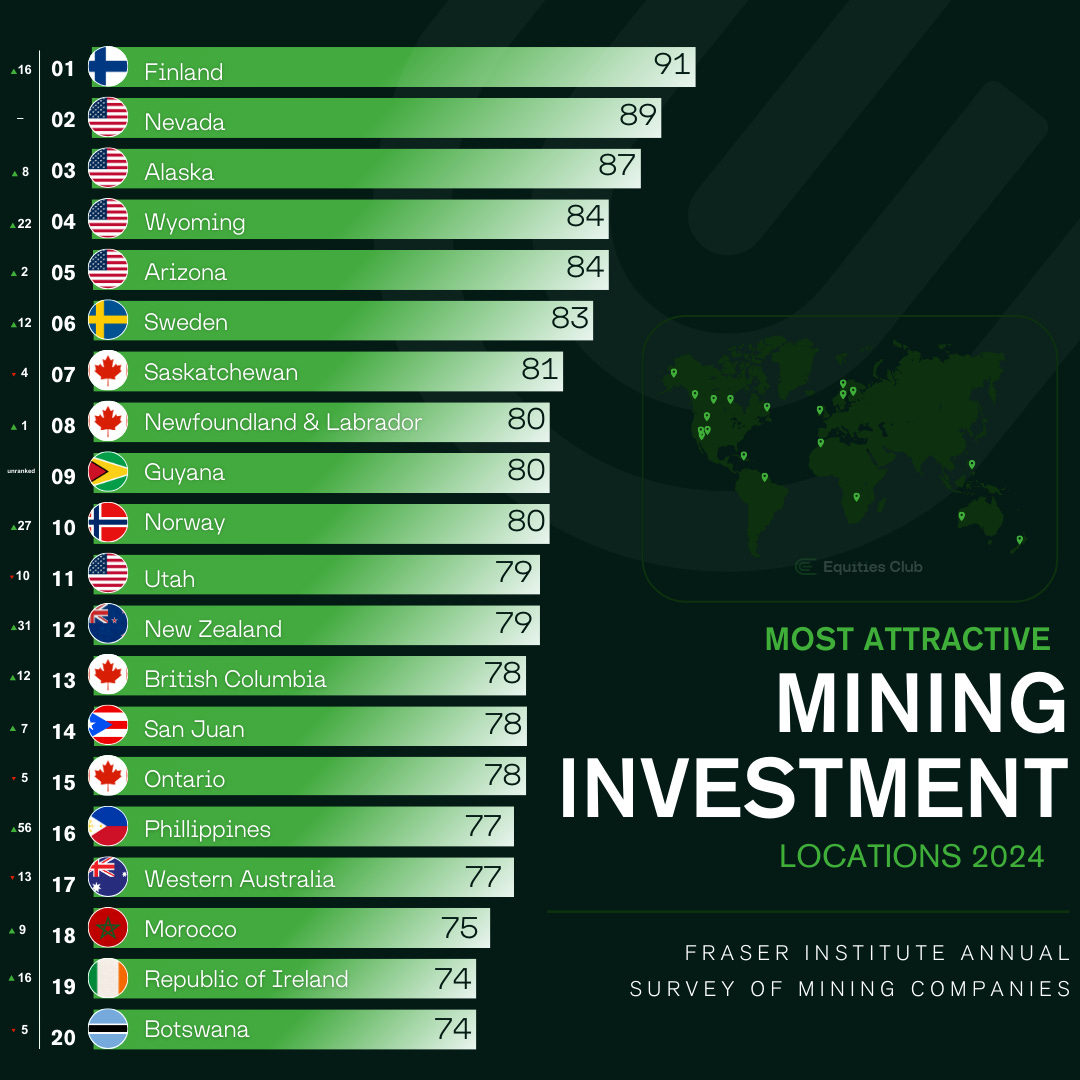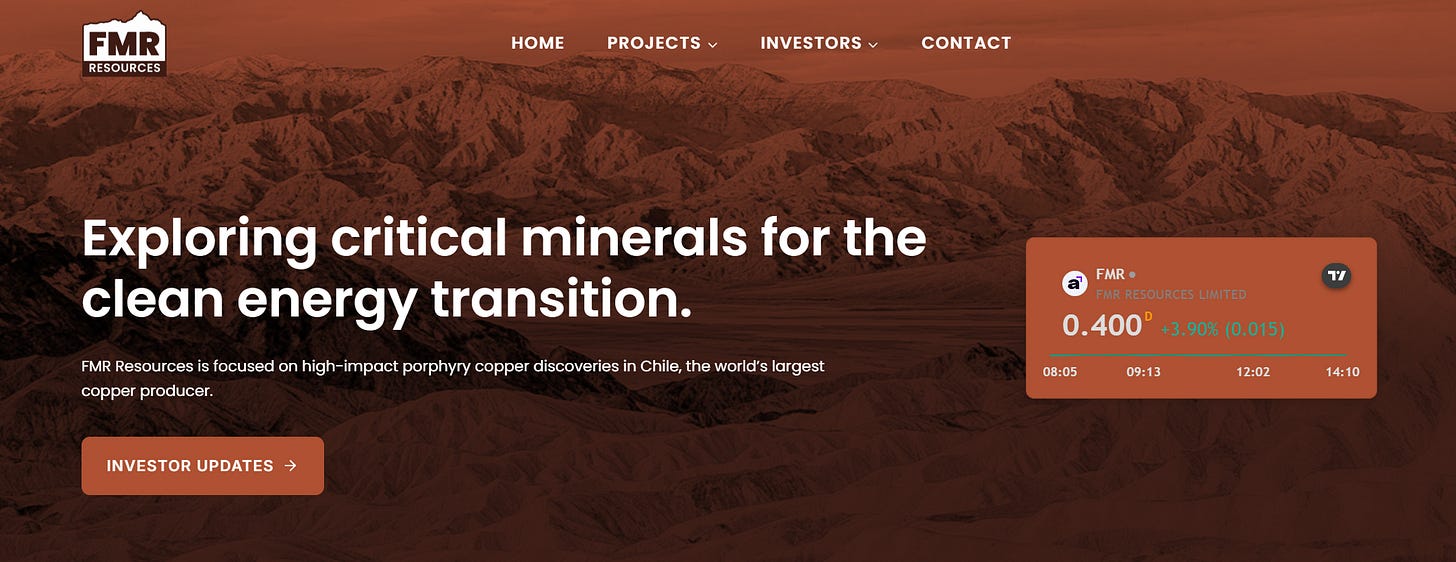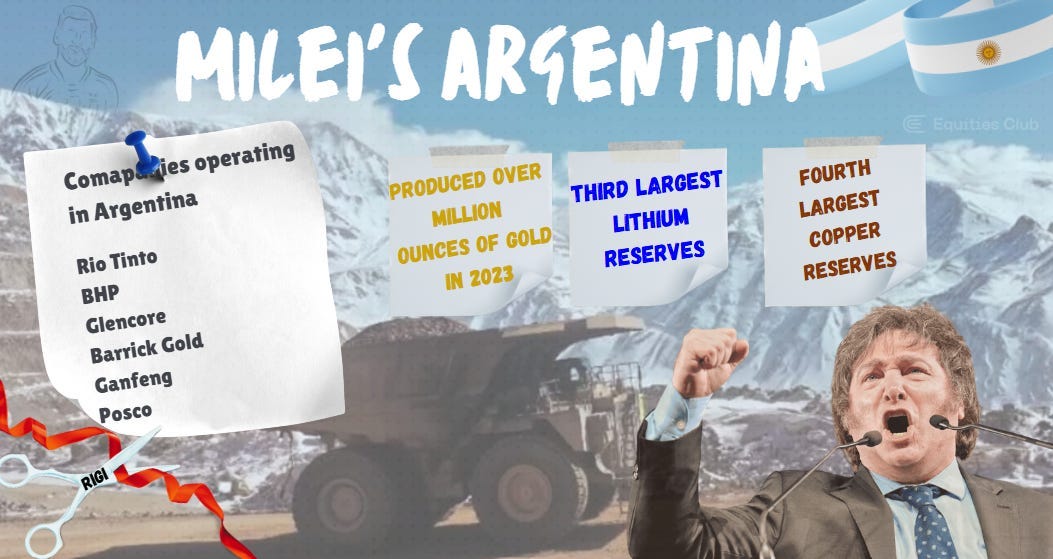7 ASX Juniors in the World’s Best Mining Jurisdictions
The Fraser Institute survey shuffled the map this year, we dig into it and pull out 7 ASX explorers drilling in the right places
If you’ve been in the resources game long enough, you’ll know geology grabs headlines, but jurisdiction decides if a mine ever gets built.
Each year, the Fraser Institute asks mining executives where they’d actually invest and where they wouldn’t touch. It ranks global mining jurisdictions on geology, regulation, and political stability - creating a snapshot of where capital feels safe.
Surprises are everywhere in this year’s survey, a reminder that in today's capital-hungry market, above-ground risk can shift investment dollars fast.
We’ve broken down the latest survey below: The best locations, the biggest climbers, the worst places, and the results we disagree with.
Plus, we spotlight seven ASX small-cap companies operating in jurisdictions that investors should be watching closely.
What Does (and Doesn’t) the Fraser Institute Survey Tell us
The survey throws geology and government policy into a blender and spits out a ranking.
It weighs up two things: the rocks in the ground and the rules above them. That covers geology and infrastructure, but also tax settings, permitting timelines, political stability, and even community attitudes.
A high score signals stability, while a low score usually means red tape or shifting goalposts. But it’s worth stressing this isn’t hard data.
Sentiment can swing on a single headline, a new government, or a court decision. The survey is a useful sense-check on where capital wants to flow at present, not a guarantee.
The survey was conducted between August and December 2024, with results published this year.
The World's Most Favourable Mining Jurisdictions
The latest Investment Attractiveness Index has a surprise leader: Finland. It’s jumped from 17th to 1st - one of the biggest moves in recent memory.
Nevada and Alaska round out the top three, proving the US still dominates, with four entries in the top 10. Europe chips in with Finland, Sweden, and Norway, while Canada holds steady with Saskatchewan and Newfoundland & Labrador.
The real shock is Guyana, unranked last year and now in ninth place, signalling a shift in how frontier jurisdictions are viewed.
And then there’s Australia. Western Australia has dropped from 4th to 17th. Queensland has slid to 39th. South Australia to 35th.
For a country used to having multiple guaranteed top-10 spots, that’s a significant fall.
Small-Caps in Great Locations: Ones to Watch
So, who actually benefits from these shifts? We’ve pulled out seven ASX juniors exploring or developing in jurisdictions that scored well in this year’s survey.
None of them is a sure thing (they're explorers, after all), but each sits in a spot where the rules and sentiment line up in their favour. If the drilling works, their location gives them a serious tailwind.
Finland - KingsRose Mining (ASX: KRM), Market cap: $34M
Early-stage copper-nickel-PGE explorer with ground in Europe’s new number one jurisdiction.
San Juan - Ronin Resources (ASX: RON), $6.5M
Milei’s reforms have put Argentina back on the radar, and Ronin’s ground is right in the thick of it exploring for copper and gold. We dug a bit deeper on Ronin recently.
New Zealand - Uvre Resources (ASX: UVA), $25M
Exploring for gold in a country that just surged up the rankings.
Ontario - Ardiden Limited (ASX: ADV), $11M
Gold ground in a proven Canadian province that continues to rank high for stability.
Chile - FMR Resources (ASX: FMR), $18M
Testing a big copper porphyry target in a country that’s clawed its way back up the table.
Botswana - Cobre Limited (ASX: CBE), $28M
Copper in one of Africa’s most mining-friendly jurisdictions.
Idaho - Advance Metals (ASX: AVM), $16M
US exposure in a state that’s building a reputation as an emerging exploration hub.
For us, these are worth keeping on the watchlist. They’re still early-stage, but they’re exploring in jurisdictions where projects can actually move forward if the drill bit delivers.
The Biggest Climbers on this Year’s List
Some of the most surprising moves came from jurisdictions few would have tipped a year ago.
Guyana went from unranked to 9th, a dramatic leap that marks it as a serious new exploration destination.
The Philippines jumped from 72nd to 16th, reflecting a sharp shift in sentiment around permitting and investment.
Saudi Arabia entered the rankings for the first time at 23rd, signalling its intent to court mining capital.
New Zealand rose from 43rd to 12th, one of the biggest gains among established names.
Mongolia climbed 30 places to 33rd, another frontier market improving fast.
Others, like Kazakhstan and La Rioja (Argentina), also made big moves, but many places long dismissed as too hard are now elbowing their way into the investment conversation.
The Least Attractive Places to Invest
Ethiopia sits at the bottom of this year’s rankings, with Suriname and Niger close behind. Also in the worst bracket are Mozambique, Madagascar, Bolivia, Dominican Republic, Guinea (Conakry), and, somewhat surprisingly, Nova Scotia and Minnesota.
For most of these jurisdictions, political instability, opaque rules, and poor infrastructure keep capital away.
The presence of Nova Scotia and Minnesota is a reminder that even established mining countries aren't immune to slipping down the rankings.
Regulatory delays, shifting policy settings, or community opposition can erode competitiveness just as quickly in a developed economy as in a frontier market.
Notable absences from the bottom 10 include South Africa and the Democratic Republic of the Congo, both of which remain in the lower half of the table but are not scraping the very bottom this year.
The Equities Club Take on This Year’s Rankings
This year’s list threw up plenty of surprises, and not all of them stack up in our view.
Utah, last year’s number one, slipped out of the top 10 entirely. We wouldn’t read too much into that.
Scandinavia is the real shock. Finland, Norway, and Sweden now occupy three of the top 10 slots. Only a year ago, an ASX CEO told us Scandinavia was “where companies go to die.” Finland didn’t even bring a new mine into production in 2024, yet it’s ranked number one.
The Trump re-election has clearly lifted sentiment for US jurisdictions as well. Whatever your politics, capital markets see it as pro-mining.
South America's Guyana is a shock, as is the Philippines, all ranking above every Australian state and territory.
Could this be a sign of the times that Australia is losing its appeal? Has the delay in permitting, the revocation of mining licences, and the constant need to appease opposition groups in Australia taken its toll?
Yes and no. Australia’s permitting delays and shifting licence settings have certainly taken a toll on the industry, but we’d still back a great WA project over almost any other jurisdiction on that list.
How Mali improved its position despite all the issues with Leo Lithium, Barrick, and others having their mines taken off them, staff being held to ransom, and mining licences revoked is beyond us.
On the positive side, San Juan in Argentina looks to be benefiting from Milei’s reforms, moving up seven places. Chile’s nine-spot climb and Mongolia’s 30-place jump are also encouraging.
Brazil, on the other hand, slid 27 places to 56th, which is surprising given the amount of rare earth exploration underway there.
What it Means for ASX Investors
These rankings are a mixed bag that should be considered as a rough guide and not a rulebook.
They can highlight which jurisdictions are warming up for a run of deals or discoveries. Sentiment often shifts ahead of capital, and a jump up the list can be an early sign of where money is heading.
But this is still opinion, not hard data. A single ministerial speech can see a country rise, while a single court case can knock it down, with nothing changing on the ground.
A tier-one deposit in a mid-ranked jurisdiction will still attract money, while a mediocre project in a "top 10" location will struggle no matter how friendly the government.
The real edge comes from spotting juniors with both prospective geology and the local muscle to get projects permitted and financed. That’s something a survey can’t measure.
Is Location That Important?
In the past few years, we've seen world-class deposits stolen and the management of some companies held to ransom. No matter how good the geology is or how much experience management has, anything can happen.
The common thread in every top-ranked jurisdiction is stability - governments with clear, consistent mining frameworks. That should be the first filter for any serious investment.
Of course, big discoveries can still appear in tougher jurisdictions. But in those cases, investors need to go in with eyes open and a higher tolerance for risk.
This year’s Fraser survey has its quirks, but it remains a useful sense-check on where capital feels safe. Worth keeping in mind until the rankings roll around again.












